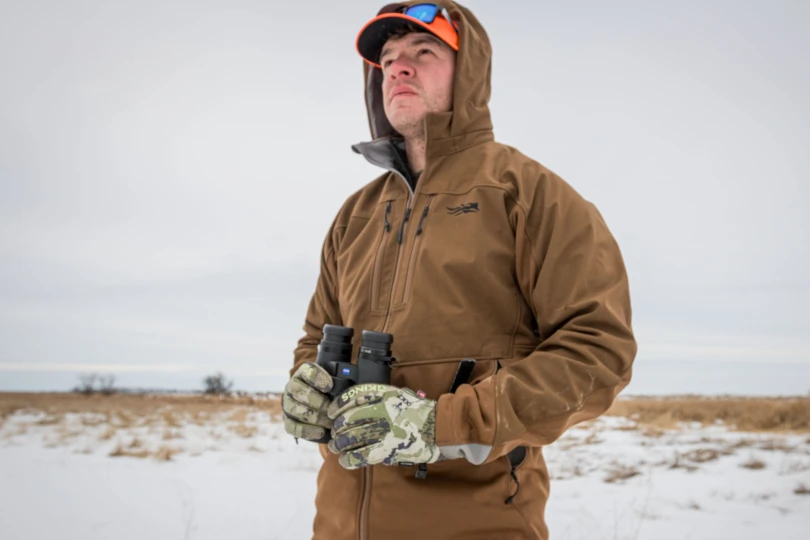What if I told you that one of the best pieces of outdoor clothing you will ever own only costs about three dollars?

What if you could shark the system by getting an unbelievable return on your gear investment? This is one of those times. The best layer that everyone can afford is an old wool sweater.
Often found at Goodwill, Salvation Army, or your grandpa’s closet, the wool sweater is probably the most cost-efficient and effective pieces of gear you can find. Let me explain.
Before I venture out to buy any piece of gear I do my darndest to examine at least three criteria: price, durability, and function. The price alone is enough to back away from many outdoor products.
Everything wears out, but it’s worth considering when that might be before you spend your money. An expensive product might be worthwhile if it will last for many years.
Let’s be honest, though. Most of our time is invested into the function of a piece. In other words, will it do what I need it to do?
Cost: Thrift-Store Wool Sweater
When it comes to an outdoor layer, it’s hard to beat the price point of a wool sweater. From free to $5, you can afford a piece of gear that might just become your new huckleberry. Even merino sweaters often cost less than $5 at Goodwill.
My first wool sweater purchase came when I was working full-time as a guide. Even as an outdoor professional, your pro-deal discount doesn’t necessarily equate to affordable gear.

A nice down jacket or synthetic insulation layer can still be a three-figure purchase.
So let’s break down the quick math here. If you have $200 to invest into a new piece of gear, you could buy a quality down or synthetic layer. Or you could spend about $5 on a wool sweater. This effectively leaves you $195 dollars to fill your car with gas, buy your mother a christmas gift, take a lady out to dinner, and then buy a couple pints for your crew.
I rest my case.
Durability
In terms of durability, wool isn’t your Cordura armor. Wool is a bit more delicate than many fabrics on the market and moths love to eat it. That said, would you rather wear your high-dollar gear or a wool sweater if there is a high chance of being roughed up while thrashing through a thicket?
Time and time again I find myself reaching for a wool sweater, especially when outcomes are uncertain. While working as a guide, I wore my sweater every hour of the day. By the end of a season, my sweater was tuckered out. It ended up costing me about a dollar a month considering the life I got out of it.
I cut that wool sweater into pieces, making a wool neck gaiter and hat. Winning.
In contrast, another medium-weight sweater I purchased at the same time is still in use and is my go-to for cold weather bike rides and runs.
Function
A wool sweater will keep you warm when wet. It layers great under a shell jacket or over a base layer. It’s quiet compared with many crinkly fabrics. Really, it’s a darned good outdoors garment.
During the winter of 2014, I was living in Minnesota. That winter I decided to bike commute as many days as I could. What I found was, whether it was 20 degrees or minus-30 degrees, a thin base layer and a medium weight wool sweater was all that I needed for the 10-mile daily commute.
The benefits of wool are well known in the outdoor community, but high price tags often deter us from investing into its powers. Hopping into the used market cuts the price to near nothing.
Another compelling factor in owning a wool sweater is the lack of fear associated with using it. I love my down jackets but you will rarely see me commuting or guiding in them. Beat the crap out of your sweater and sleep well, my friends.
One noteworthy downside to wool: It is a little heavy. I found the modest additional weight didn’t really matter all that much throughout my daily hustle.
Compared With Pricey Gear
Of course there are times when expensive gear is a better choice and worth the money. Sports like ice climbing, mountaineering, and skimo racing put a premium on light weight, and any failure in gear can become a real disaster quickly.
So yes, that high-end down jacket, shell, or fleece has its place. Wool can itch if it’s not a fine fiber. And sweaters from the thrift store are not articulated for movement like performance clothing.
But a whole lot of adventures can utilize a wool sweater, either as primary outerwear or an insulating layer coupled with higher-tech layers. Wool has been part of a lot of epic adventures through history, and it doesn’t have to come from a high-end outdoors brand to be effective.
Cheap Wool Sweater, A Multifunctional Workhorse
Your wool sweater might not be the most durable piece of gear, but you’ll be hard pressed to cram more function into a layer that costs as much as a cup of coffee. It’s worth noting that not all Goodwill sweaters are made of high-quality fabric.
Take time to check labels and understand what real wool feels and looks like before you spend away your caffeine budget. The best bang for your buck is a sweater made of 100-percent merino wool.
It’s no doubt that history teaches many lessons. Using grandpa’s old sweater might just be one of them.
–Seth Orme is a founding member of the Packing It Out crew. In 2015 and 2016, the team hiked the AT and PCT, respectively, picking up trash along the way. Learn more about the project here.









